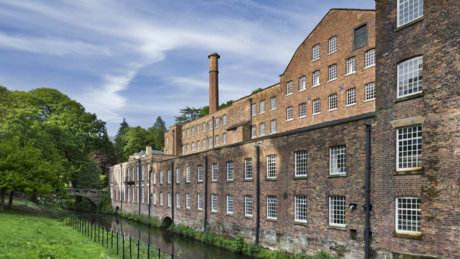Quarry Bank Mill
 Quarry Bank overflows with the atmosphere of the Industrial Revolution. A visit to the cotton mill, powered by Europe's most powerful working waterwheel, will certainly stimulate your senses.
Quarry Bank overflows with the atmosphere of the Industrial Revolution. A visit to the cotton mill, powered by Europe's most powerful working waterwheel, will certainly stimulate your senses.
The mill, which is situated in the Cheshire village of Styal on the banks of the River Bollin, is undoubtedly one of the best preserved textile mills of the Industrial Revolution and is now a museum of the cotton industry. Quarry Bank was founded in 1784 by Samuel Greg for the spinning of cotton and by the time of his retirement in 1832 was the largest such business in Britain. Its original iron water wheel was designed by Thomas Hewes and built between 1816 and 1820. The over head shafts above the machines were attached to the water wheel by a belt. When the water wheel turned, the motion moved the belt and powered the machine.
The mill is operated by former mill workers, mechanical and hand-spinning and weaving can be seen in progress on the mill factory floor.
Quarry Bank Mill is notable for its use of unpaid child apprentices, a system that continued until 1847, with the last child to be indentured starting work in 1841. Take a tour of the Apprentice House with a costumed guide and see how hard life was for the child workers.
The Styal Village Estate w as built by Samuel Greg to house the workers and included a shop and a chapel. To maintain the workers close to the mill, the Old Oak Cottages were built in 1820s.
The mill is still producing calico which can be bought at the mill shop.
Quarry Bank Mill and the Styal Estate are now in the ownership of The National Trust.
